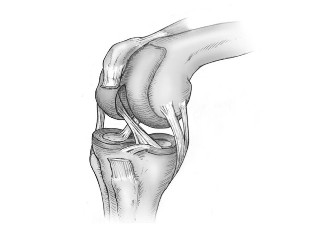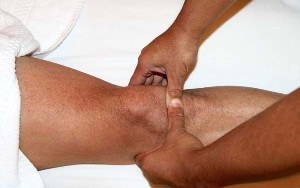Arthritis and arthrosis negatively affect a patient’s entire life. When signs of the described change in joints appear, people draw hasty conclusions. They can make mistakes, confuse the indicated pathologies. It is important to note that there is a significant difference between arthritis and arthrosis of the knee joint. Let’s examine the characteristics of each disease in more detail. We learn about their differences and how arthrosis differs from knee gonarthrosis.
Expand terminology
Arthritis and arthrosis are related words. Both are joint damage. Because of the consistency of terms, patients often perceive them as synonymous. This approach is wrong. To know how arthritis differs from knee arthrosis, you need to consider the characteristics of each.
Arthrosis
Arthrosis is represented by deformation of the joints. Pathology is considered age-dependent. More common in elderly patients. It can also be found in people under the age of 40. More often, its occurrence is provoked by severe damage to the joints, fractures. The risk group is represented by athletes. Learn more about knee arthrosis.Arthritis
Arthritis is an inflammatory pathology that develops in a compound. Its occurrence is usually manifested by a deterioration in the functioning of the relationship. The whole body was inflamed. The disease can flare up in any joint. You can cover multiple connections at once. Learn more about knee inflammation.Difference Between Arthritis And Arthrosis
The difference between arthritis and arthrosis is represented by the nuance that immunodeficiency is considered a provocateur of inflammation. It can manifest itself in:
- Stressful situation;
- Hypothermia;
- Deferred flu.
Inflammation is caused by an infectious agent, metabolic abnormalities and impaired immunity. With the increased functioning of the body’s defense system, the immune system works against itself.
Signs of arthritis
This joint pathology is manifested by the main and additional signs. The most important:
- Joint pain. Strong, worse at night;
- Redness of the dermis above the affected joint, swelling.
Additional signs of inflammatory disease can be observed:
- nocturnal pains with complete rest;
- pain relief on movement;
- morning stiffness. It will pass in an hour;
- redness, knee swelling;
- Severe pain attack in the knee area. They last for several days;
- presence of dense nodules under the skin;
- subfebrile temperature;
- alternating joint swelling;
- blistering of the dermis, erythema. They indicate the development of a reactive form of pathology;
- decreased appetite;
- weight loss.
Signs of arthrosis
The joint damage considered occurs with main and additional signs. The main ones are:
- Joint cracking;
- localization in the knee area;
- restricts connection mobility;
- Pain is more common when moving. Rarely appears at rest;
- joint deformity. Its appearance changes, the direction of the limbs may change;
- deterioration of blood supply, nourishment of joint tissues.
The specific manifestations are:
- Pain at night;
- pain relief at rest;
- nonsteroidal anti-inflammatory drugs do not relieve pain;
- painful crackling;
- limited joint mobility;
- overgrowth of osteophytes.
Differences in major joint lesions

The most important difference between arthrosis and arthritis is the fact that arthrosis is a pathology of the joints that destroys and deforms it. Arthritis affects the functioning of internal organs. The kidneys, heart and liver suffer from this disease. When choosing treatment, doctors pay special attention to the internal organs.
To make it easier to differentiate between diseases, we present them below.
Symptoms of Pathology / zxtr>| Pain Syndrome |
Usually appears after movement. Pain can also be felt after a heavy load. People don’t pay enough attention to the fact that pain triggers overload. The disease progresses and leads to painful feelings during light loading of the joint. The knees are also bothersome on rest days when the joint is not affected. In a comfortable position, the pain does not bother and subside. |
With this pathology, pain can be felt continuously (with intense physical activity, at work, at rest). The disease is characterized by nocturnal pains that often interfere with 3 to 5 in the morning. |
Crunch |
This relationship defeat is special. Its occurrence is provoked by the destruction of the cartilage layer and the friction of the bones. However, a specific sound can be heard (dry, rough). It increases as the disease progresses. |
| Decreased joint mobility |
The affected joint reduces the range of motion. |
The joints, the whole body are bound. |
Joint Deformity |
Appears gradually at the joints. If the disease aggravates the aching type of pain. There is usually no swelling. |
Warp is also present. The area of the affected joint turns red and swells. Acute pain may be felt after pressure. Possible lumps. The temperature at the site of inflammation rises. |
Blood Test Results |
Osteoarthritis does not affect your blood test score. Inflammatory markers remain unchanged. |
This disease is characterized by an increase in ESR. An increase in the level of leukocytes indicates the course of inflammation in the joint. Biochemical analysis data show an increase in inflammatory markers. |
Localization |
They are most often fixed in the knee joints. Less often, the disease covers the joints of the fingers and ankles. |
| |
Is there a difference between arthrosis and gonarthrosis of the knee joint? Gonarthrosis is arthrosis of the knee joints. This pathology can be confused with several diseases:
- Meniscopathy.Represents meniscus damage. This pathology, knee block, can be observed in patients of different ages, both sexes. Basically, a relationship can be damaged. The difference from gonarthrosis is rapid development. After running, jumping, walking, the cracking of the joint and its acute pain manifest itself. In 10-15 minutes. sharp pains pass.
- Coxarthrosis(arthrosis of the hip joint). This diagnosis can be made due to the reflection of pain in the area from the hip joint to the knee. It is very easy to distinguish such a condition. In coxarthrosis, the mobility of the knee joint does not change. It bends easily, without pain. Doctors notice a decrease in the rotation of the foot from the "hip". The legs are also difficult to spread sideways.
- Vascular painmanifests in the knee. Pain may indicate a deterioration in blood circulation in the knee joint. Such feelings are observed in adolescence. Growth is active at this time. The vessels do not have time to develop as fast as the bones. The pain in the pathology is symmetrical and manifests equally in both limbs.
- Periarthritis. With inflammation of the tendons of the knee, pain can be felt after carrying heavy bags, after going down the stairs. The pathology is most commonly observed in women over 40 years of age. The pain does not extend to the entire knee. It can only be felt on the inner surface of the knee. Knee movement is unlimited.
Differential diagnostics
For the described joint diseases, the doctor will instruct the patient to perform a differential diagnosis. It is important to distinguish between arthritis and osteoarthritis. There are several subtypes of arthritis. Osteoarthritis progresses in several stages.
To distinguish these two pathologies from each other and from several other knee changes, select:
X-ray of- compounds;
- blood biochemistry;
- rheumatic tests;
- CT;
- spinal x-ray;
- MRI;
- bone examination.
Treatment of joint lesions
It is important to know what pathology you have been diagnosed with (arthrosis or knee arthritis) and not to be confused. Different approaches are used to treat these diseases.
Medications for the treatment of arthrosis

Doctors use medications (painkillers, hormonal medications) to treat arthrosis. physiotherapy procedures, therapeutic practices and massage are also used. If the pathology is particularly severe, drugs containing glucosamine sulfate are used. In some cases, surgery is needed.
Therapeutic course for arthritis
Doctors choose therapeutic treatment for arthritis, taking into account the form of the pathology. Patients should avoid increased physical activity. loads, excessive alcohol consumption, unhealthy diet. Therapy is performed using medications (non-steroidal anti-inflammatory drugs, antibiotics). In order to increase the efficiency of the performed treatment, physiotherapy procedures and exercise are prescribed.
Prevention of joint pathologies
To prevent the development of pathologies such as arthrosis or arthritis of the knee, it is advisable to listen to the recommendations of specialists. As a preventative measure, you must meet the following requirements:
- Proper nutrition;
- Moderate physicalLoad.

All of these activities will be needed after treatment. Let's examine the characteristics of each.
Physical activity
They should be moderate. Such exercises contribute to weight loss, strengthening of the muscle fiber corset, and increased blood circulation. All elements are very important in the prevention of joint diseases.
High load on connections
Patients should be careful. If you put more strain on your joints and accidentally damage them, you can have the opposite effect. Instead of improving the condition, new problems appear. It is also dangerous if the exercises in the exercise complex are not performed properly. Each lesson should be conducted under the supervision of an instructor treating physician.
Joint tournament
It is sufficient to perform joint exercises as a preventive measure. Quite common. It is not difficult to implement. In addition, there is no need to purchase special equipment. Particular attention should be paid to pool exercises. When performing any activity in the water, the strain on the joints is minimal.
Proper nutrition
Doctors recommend reviewing your diet and food preferences. For prevention, doctors recommend that a number of products be excluded from the daily menu. Including:
- Red meat;
- Alcohol;
- High fat foods.
You should include in your diet:
- Seafood;
- Fruit;
- Hal;
- Gelatin (can be used as a jelly meat, jelly dessert);
- Vegetables

Drink 2-3 liters of water a day. Alcohol is excluded. You need to start taking vitamins: calcium, D, B, A.
Other preventive measures:
- Weight control;
- Protection against joint hypothermia;
- Mandatory maintenance of a healthy lifestyle;
- Proper sleep, rest;
- Wearing comfortable shoes. It is possible with orthopedic insoles with comfortable heels;
- Eliminate a bad habit like crossing your legs while sitting;
- Eliminate stress.


















































